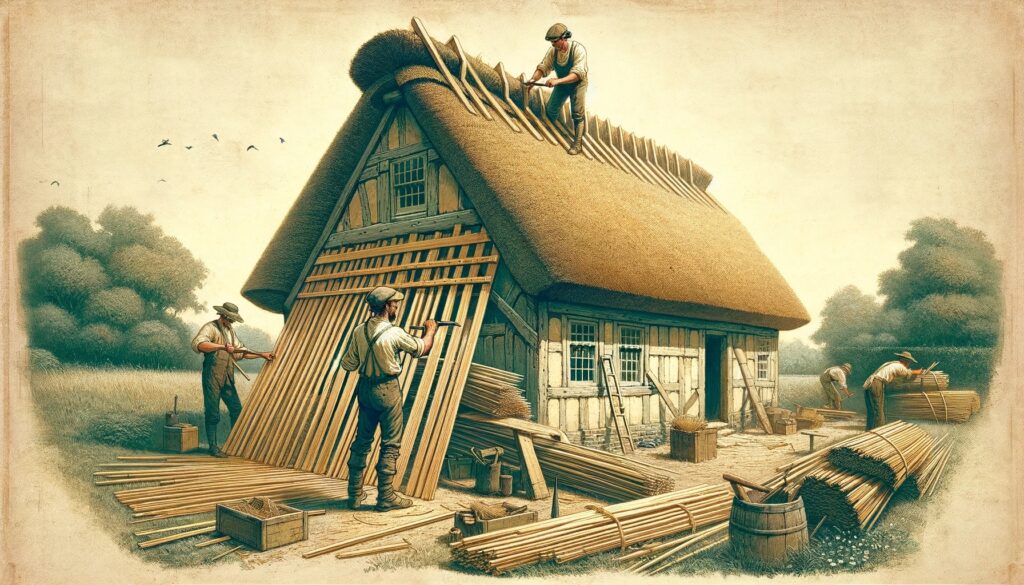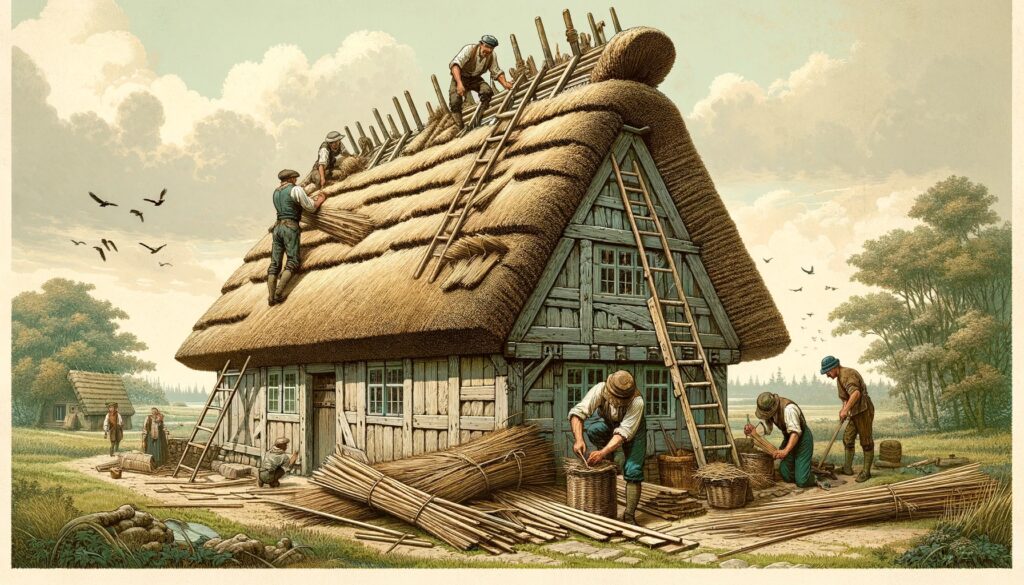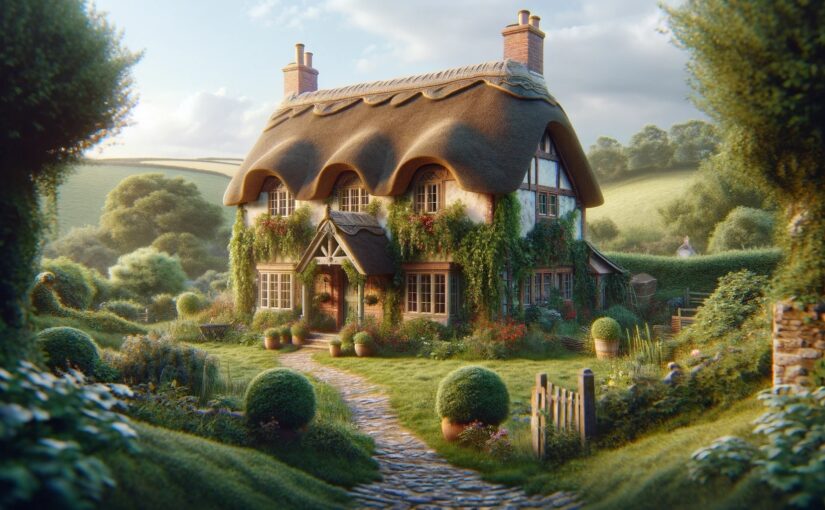Once upon a time, in a world not too far from our own, buildings wore their roofs like crowns, and among these, the thatch roof stood out for its unique charm and fairy-tale aesthetic. Maybe you’re scratching your head, wondering what on earth a thatch roof might be! You’re about to find out one of the most sustainable and picturesque roofing materials known to humankind.
What is Thatch, Anyway?
It is much more than just some old construction material (or better: method). Imagine a roof made of straw, reeds, or palm leaves. That’s thatch for you – a natural roofing material that has been keeping homes cozy and dry for thousands of years. It’s not just about slapping some straw on your roof and calling it a day; thatch roofing is an art, a craft passed down through generations of skilled thatchers.
Why Go Thatch?
Now, you might be thinking, “Why would anyone choose a straw roof in this day and age?”
- Eco-friendly Elegance: Thatch is made from materials that are readily available and renewable. This means you’re not only adding a touch of rustic elegance to your home but also giving the planet a high-five.
- Natural Insulation: Thatch acts like a natural insulator. It keeps your home toasty warm in the winter and pleasantly cool in the summer. Who knew straw could do all that?
- Whispering Winds: There’s something utterly magical about the sound of the wind whispering through a thatch roof. It’s like living in your own personal nature retreat.
- Aesthetic Appeal: Thatch roofs have a unique, timeless beauty that can transform any building into a picturesque masterpiece. It’s like stepping into a storybook every time you come home.
But Wait, There’s More!
If you’re already picturing your dream home topped with a beautiful thatch roof, hold on to your hat, because there’s more good news. Thatch roofs are incredibly durable, with a lifespan that can stretch up to 50 years with proper care and maintenance. Plus, they’re an excellent way to stand out in a sea of conventional roofs, making your home not just a living space, but a piece of art.
Embarking on Your Thatch Roof Adventure
Before you start gathering straws, it’s important to connect with a professional thatcher. They’ll guide you through the process, ensuring your roof is not only beautiful but also structurally sound and weatherproof.
Creating a thatched roof is an intricate process that combines traditional craftsmanship with a deep understanding of natural materials. While it’s a job best left to professional thatchers, understanding the steps involved can give you a great appreciation for the art and skill required. Here’s a simplified overview of the process of crafting a beautiful thatched roof:
1. Preparation and Planning
- Assess the Roof Structure: The roof structure must be sturdy and designed to support the weight of the thatch. It can be significant, especially when wet.
- Choose the Right Materials: Common materials include water reeds, wheat straws, or long rye straws. The choice depends on the climate, availability, and the specific look you’re aiming for.
- Gather Tools and Materials: Besides the thatching material, tools such as shears, hooks, and spars (small rods used to secure the thatch) are essential.
2. Installing the Base Layer
- Attach Battens: Horizontal battens are fixed to the roof rafters, providing a framework to secure the thatch.
- Lay the First Layer: You lay a base layer of thatching material and fix it onto the battens. This layer often consists of coarser material, serving as a foundation.

3. Building Up the Thatch Roof
- Application: You apply thatching materials in layers, position and secure each layer carefully. This is a meticulous process, ensuring the roof is waterproof and durable.
- Thatching Technique: The material is bundled, and then fixed to the roof at a steep angle. This ensures water runs off the roof, preventing leaks and extending the life of the thatch.
- Securing the Thatch: As layers are added, they are secured with spars or twine, depending on the thickness and type of material.

4. Shaping and Trimming
- Forming the Ridge: The ridge of the roof is critical for waterproofing and is often the most decorative part. It requires precise layering and shaping to ensure effectiveness and aesthetics.
- Trimming: Once the thatching is in place, you trim it to create a uniform and neat appearance. This also helps in controlling the flow of water off the roof.
5. Adding Finishing Touches
- Decorative Features: You can create patterns and designs in the thatch, especially along the ridge, to add character and individuality to the roof.
- Netting or Wire Mesh: In some cases, you want to apply a netting or wire mesh over the thatch to protect it from birds and small animals.
6. Maintenance
- Regular Inspections: Thatched roofs require regular inspections to check for any signs of wear or damage. This ensures that any issues are addressed promptly to maintain the roof’s integrity and appearance.
7. Enjoy Your Craftsmanship
- Admiration and Care: Once completed, a thatched roof is not only a functional element of a home but also a work of art that reflects the skill and dedication of its creators. With proper care, it can last for many decades, aging gracefully and becoming more beautiful over time.
Creating a thatched roof is a labor of love, requiring patience, skill, and respect for traditional building methods. It’s a fascinating process that connects us with a simpler, more sustainable way of living, offering both beauty and practical benefits. Whether you’re considering a thatched roof for your home or simply curious about the craft, the creation of a thatched roof is a remarkable journey from start to finish.
A Roof Like No Other
Choosing a thatch roof is like choosing to live in a work of art. It’s a statement of style, sustainability, and a nod to the craftsmanship of yesteryears. Whether you’re building a new home or looking to add character to your existing abode, a thatch roof can transform your space into a sanctuary of charm and tranquility.
It’s not just about the material; it’s about embracing a lifestyle that celebrates nature, craftsmanship, and the beauty of the unconventional. If you’re ready to make your building project truly stand out, maybe it’s time to consider thatching your way to an eco-friendly masterpiece. Who knows? Your home could be the next fairy tale to come to life!
